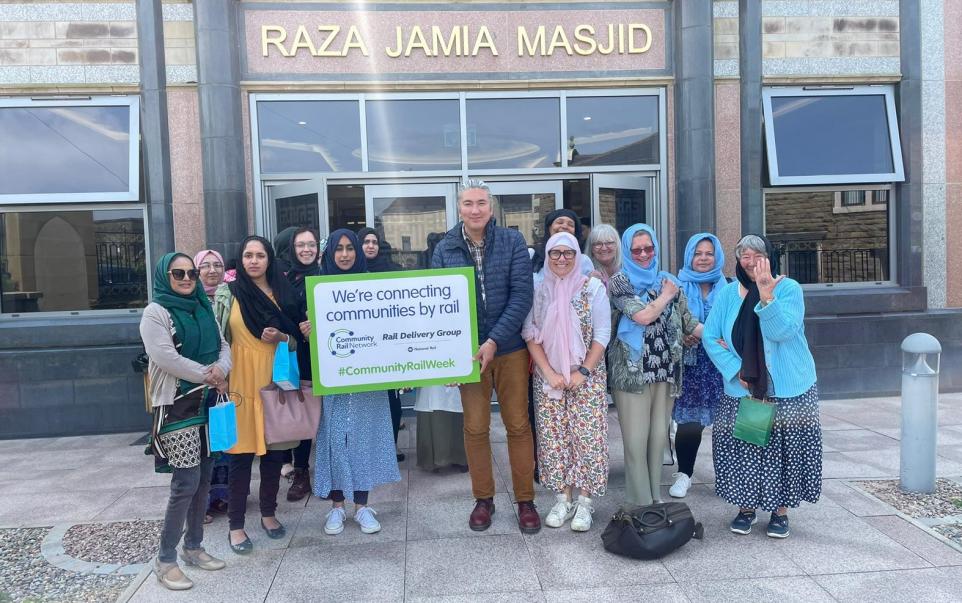Seeing Red

From a young age we are taught that different colours have different meanings.
Blue is a cool, calm colour. The colour of sunny, cloudless skies and beautiful crystal seas.
Red is a hot, angry colour. The colour of blood, of burning embers. It symbolises passion… and danger.
So ingrained are these meanings that without even being told the detail behind climate scientist Professor Ed Hawkins’ Warming Stripes, we know straight away that there is cause for concern. The stripes on the left of each image are predominantly blue – and those on the right are predominantly red.
The warming stripes project started a few years ago as a way to visually translate the reality of our changing climate. Professor Hawkins worked with Met Office data from the late 1800s to today, and produced a graphic showing global average temperatures, representing each year with a single vertical stripe of colour.
Following a warm (forgive the pun) reception for the stripes, Professor Hawkins and his team began work on more graphics – this time focusing on temperatures in individual countries and regions. Whilst the images were not identical, the trend was clear to see. Regardless of where in the world you look, most years at the end of the 19th century were far cooler than most years at the start of the 21st.
The stripes got people talking and provided a simple way to introduce the topic of climate change; making what can be quite complex data more accessible. Warming stripes began to be used in inventive ways – from knitted scarves, to the sides of trams – the stripes have captured the imaginations of people across the globe and have become a hugely successful storytelling tool to help drive awareness of climate science.
Here at Carbon Copy, we became aware of warming stripes as many people did, through social media and through our network of people taking local climate action. Our goal as a charity is to drive awareness of the things people can do where they live in the UK to reduce carbon emissions – so we wanted to get even more detail, with warming stripes that depict what’s happening closer to home.
We gathered local Met Office data for every UK county and approached Professor Hawkins for his help in developing new warming stripes graphics that represent these areas. You can search for your local area via our Carbon Zero Explorer tool, download your stripes, and use them however you want.
As beautiful as these graphics are, they all tell the same worrying story. From the Orkney Islands to Cornwall, places are getting warmer. We know that in the last decade alone, we’ve seen record breaking temperatures almost every year, and we have started to feel the effects of the changing climate – with bigger winter storms, more flash floods and catastrophic droughts and wildfires.
It’s hard not to see red, when we…see red. It is natural to look to someone or something to blame, and to feel frustrated that those in power are dragging their heels. It’s important for Governments and big business to take bold, decisive action on the climate crisis; but just as important, is recognising the huge impact people in local communities have in driving change in their area.
These stripes are a new way to start bigger conversations locally, to bring more people on board, and build even more momentum in local areas across the UK. They are a fantastic way to connect people with the reality of what is happening where they live.
There is still time to reverse the trend and get us back into the blue. Search for your local area, and download your warming stripes now.
Recommended from Carbon Copy
-

Copy these! 5 big local ideas about being more inclusive
Those who feel the impacts of climate change most keenly are often left out of environmental policy conversations. How can…
-

Copy These! 5 Big Local Ideas About Using Decentralised Energy
Communities around the UK are generating their own electricity - through solar, hydro and wind. But how can they ensure…
-

A platform for change
Shahiesta Raja has helped a group of women from her home town of Accrington develop confidence and pride in travelling…
-

This Is All Nature
On Carbon Copy, we've shared over 500 inspiring stories that relate to nature, food & agriculture. In this blog, we…